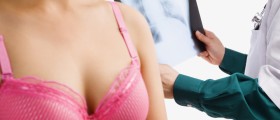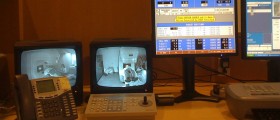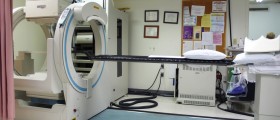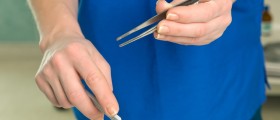
Breast Discharge and LumpNipple DischargeNipple discharge is the most common health complaint of women in their reproductive years. Although it can be very alarming when first noticed, nipple discharge doesn’t have to be cancerous in women. However, nipple discharge in men is always abnormal and should be investigated. Nipple discharge may occur spontaneously or when nipples or breasts are squeezed. Also, it may occur in both breasts (bilateral) and in one breast (unilateral). This discharge can range in color and may be yellow, milky, bloody (sanguineous), purulent, pink (serosanguineous), multi colored and sticky, or clear and watery (mucinous).
Causes of Nipple DischargeNipple discharge can be milky which is usually breast milk secreting from the nipples of nonpregnant and nonlactating women. This commonly occurs due to increased level of hormone prolactin and it may lead to persistent production of milk, a condition known as galactorrhea. This condition doesn’t necessarily develop in all patients with elevated levels of prolactin. Nipple discharge in most cases, approximately 90%, occurs due to a benign condition such as benign ductal disorders like intraductal papilloma, mammary duct ectasia and fibrocystic changes. Other benign causes of nipple discharge can be disorders of the endocrine system, breast abscesses or breast infections. On the other hand, nipple discharge can be caused by cancer in less than 10% of nipple discharge cases. It is usually intraductal carcinoma or invasive ductal carcinoma.
DiagnosisDiagnosis can be made based on history of current medical condition, evaluation of symptoms, past medical history and physical exam. Considering the history of present condition, it is important to determine whether the discharge is bilateral or unilateral, what color of the discharge is, when it started to appear, is it spontaneous or results from nipple stimulation and if lump or pain exists. Assessment of symptoms can help to identify possible cause of nipple discharge. A doctor must inquire about presence of fever that is usually associated with mastitis or breast abscess. Cold intolerance, constipation, weight gain are usually present with hypothyroidism. Amenorrhea, infertility, headache or visual problems commonly associated with pituitary tumor. Finally, ascites or jaundice often caused by liver disorders. Patient should inform his or her doctor if uses any drugs that may stimulate prolactin secretion such as birth control pills and antihypertensive medications. A doctor must ask about other possible causes of hyperprolactinemia such as chronic renal failure, liver disorders, thyroid disorders, and pregnancy. History of infertility, hypertension, depression, breastfeeding, menstrual patterns and cancer must also be taken into account. Finally, breasts must be examined to check symmetry, dimpling of the skin, erythema, swelling, changes in color of nipples and skin, crusting, ulceration and retraction of nipples. Signs and symptoms that indicate serious underlying condition of nipple discharge include: spontaneous and unilateral discharge, male gender, age of 40 and above and bloody discharge.
Breast LumpBreast lump is also quite frightening when discovered although most breast lumps are noncancerous. Normal breast tissue is lumpy and may change during menstrual period and with age. However, you should seek medical help if you notice new or unusual breast lump, breast lump that remains after period or breast lump that changes its size or shape. Also, if skin on your breasts changes and become red, crusting and dimpling or if your nipples turn inward you must consult your doctor.
















_f_280x120.jpg)
Your thoughts on this
Loading...